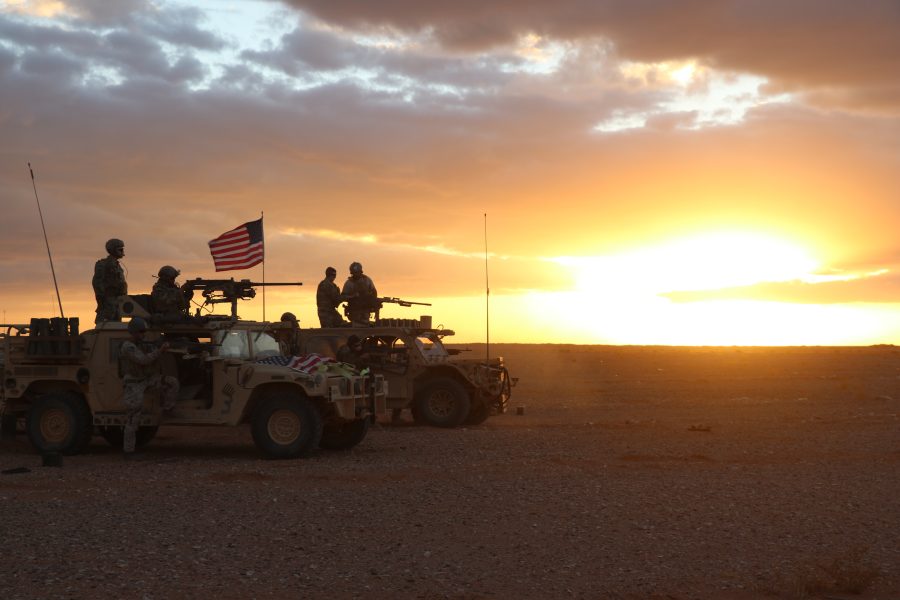A U.S. Navy warship in the Red Sea shot down three cruise missiles and several drones on Oct. 19 that were launched by Iranian-backed Houthi rebels and potentially heading toward Israel, the Pentagon said.
The destroyer USS Carney was steaming in the northern Red Sea when it shot down the missiles and drones.
“This action was a demonstration of the integrated air and missile defense architecture that we have built in the Middle East and that we are prepared to utilize whenever necessary to protect our partners and our interests in this important region,” Pentagon Press Secretary Air Force Brig. Gen. Patrick S. Ryder said.
The Pentagon also disclosed that there have been additional drone attacks against U.S. forces in the Middle East. The Al Tanf Garrison, a base in southeast Syria that is used by American troops and their Syrian partners, was targeted by two drones on Oct. 18.
“U.S. and coalition forces engaged one drone, destroying it, while the other drone impacted the base, resulting in minor injuries to coalition forces,” Ryder said.
That same day, Ryder said an early warning system at the al Asad base in Iraq signaled a potential attack on the base. Though no attack took place, a U.S. civilian contractor suffered a cardiac episode and died, Ryder added.
While the Pentagon did not specify the groups that mounted the missile and drone attacks, the Houthis have long been equipped by Iran, as have the militias in Iraq and Syria.
“This is an uptick in terms of the types of drone activity we’ve seen in Iraq and Syria,” Ryder said. “These small-scale attacks are clearly concerning and dangerous.”
The increase in attacks comes against the background of Israel’s confrontation with Hamas and the controversy over an explosion at a hospital compound in Gaza that appears to have killed scores of civilians.
The U.S. and Israel say a variety of intelligence establishes that the cause of the explosion at the compound was an errant rocket fired by Islamic Jihad, a militant group that fights with Hamas. Hamas has blamed Israel.
The U.S. has around 2,500 troops in Iraq and 900 troops in Syria. To deter potential escalation on the part of Iran and the militias it backs, the U.S. has sent more USAF fighters and attack aircraft to the region—F-15E Strike Eagles, F-16 Fighting Falcons, and A-10 Thunderbolt IIs—as well as the USS Gerald R. Ford carrier, which has four squadrons of F/A-18s.
Ryder stopped short of blaming Iran for orchestrating the latest drone and missile attacks, saying the U.S. was still evaluating the situation.
“We’re continuing to assess the nature of these attacks,” Ryder said. “In the past, we have seen Iranian-backed militia conduct these types of things.”
He also delivered a thinly veiled warning that such attacks might prompt U.S. military action.
“I’m not going to forecast any potential response to these attacks,” Ryder said. “I will say that we will take all necessary actions to defend U.S. and coalition forces against any threat. Any response, should one occur, will come at a time and in a manner of our choosing.”
